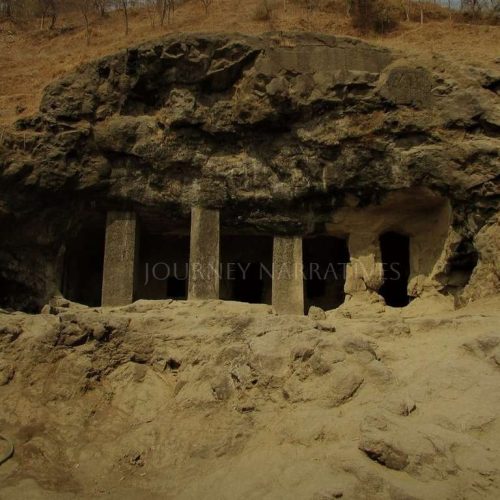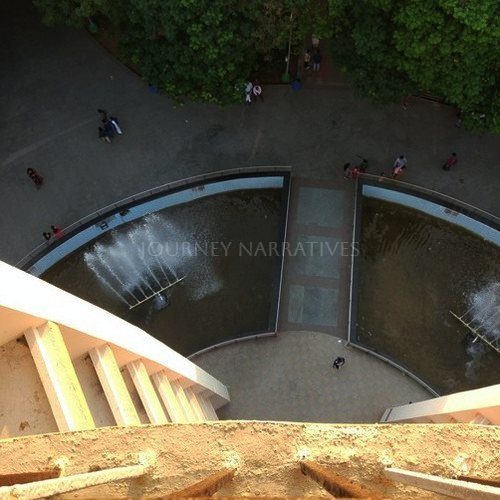Some of the links on this blog are affiliate links. This means I may earn a small commission if you make a purchase through these links, at no extra cost to you. This helps support the blog and allows me to create more valuable content. Thank you for your support!
Welcome to the Brihadeeswarar Temple in Thanjavur, one of the famous temples in South India, a place filled with history and spirituality. Stepping into the ancient city of Tanjore, Tamil Nadu, India feels like embarking on a voyage through time. One of the most remarkable landmarks in this city is the Brihadeeswarar Temple, a masterpiece of Dravidian architecture and a UNESCO World Heritage Site. Join me on a virtual tour as I recount my visit to this awe-inspiring temple, sharing insights, tips, and reflections along the way.
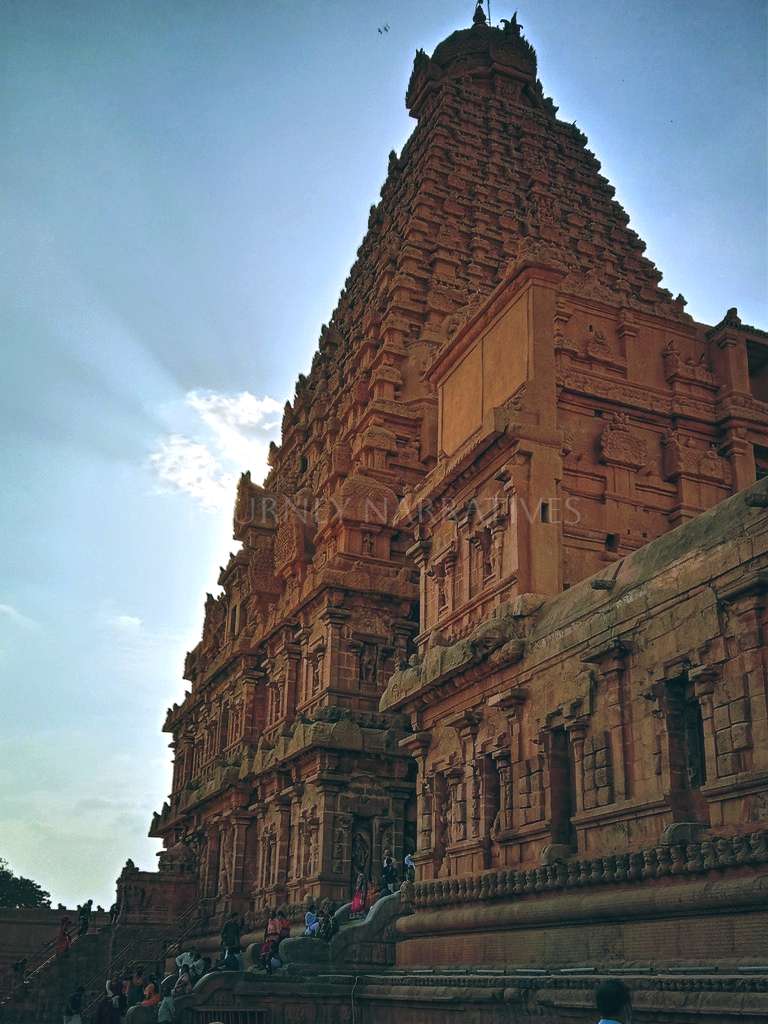
Table of Contents

5 Reasons Why Brihadeeswarar Temple in Thanjavur Should Be on Your Travel List
Here are five compelling reasons why Brihadeeswarar Temple should be at the top of your travel list.
1. Architectural Marvel
Brihadeeswarar temple built by Raja Raja Chola I in the 11th century, also known as the “Big Temple,” is a testament to the architectural prowess of the Chola Dynasty. This temple stands as one of the greatest achievements in Indian temple architecture. This UNESCO World Heritage site is a marvel of ancient Indian architecture and a treasure trove of history, culture, and spirituality. The temple’s towering vimana (sanctum tower) soars to a height of 66 meters, making it one of the tallest in the world. The precision in the construction, the intricate carvings, and the overall grandeur of the temple are sure to leave you in awe.
2. Rich Historical Significance
Visiting Brihadeeswarar Temple is like stepping back in time. The temple was completed in 1010 AD and has stood the test of time, surviving various invasions and natural calamities. It offers a glimpse into the glorious past of the Chola Empire, one of the longest-ruling dynasties in South Indian history. The temple’s inscriptions provide valuable insights into the political, social, and cultural aspects of the time, making it a must-visit for history enthusiasts.
3. Cultural Experience
Brihadeeswarar Temple is not just a place of worship; it’s a vibrant cultural hub. The temple complex is often abuzz with various cultural and religious activities, giving visitors a chance to experience the rich traditions of Tamil Nadu. From classical dance performances to traditional music concerts, there’s always something happening here that will immerse you in the local culture. The annual festival, Maha Shivaratri, is a grand event that attracts thousands of devotees and tourists alike.
4. Exquisite Sculptures and Art
The temple is adorned with some of the most exquisite sculptures and frescoes you will ever see. The detailed carvings on the walls, pillars, and ceilings depict various deities, mythological scenes, and aspects of daily life during the Chola period. The temple’s famous Nandi statue, carved out of a single stone and measuring about 6 meters in length and 3 meters in height, is a remarkable piece of art that showcases the incredible craftsmanship of the time.
5. Spiritual Serenity
For those seeking spiritual solace, Brihadeeswarar Temple offers a tranquil environment. The temple’s sanctum sanctorum, with its enormous Shiva Linga, emanates a powerful spiritual energy that many visitors find deeply moving. The peaceful ambiance, coupled with the temple’s historical and architectural grandeur, creates a unique spiritual experience that is both uplifting and calming.
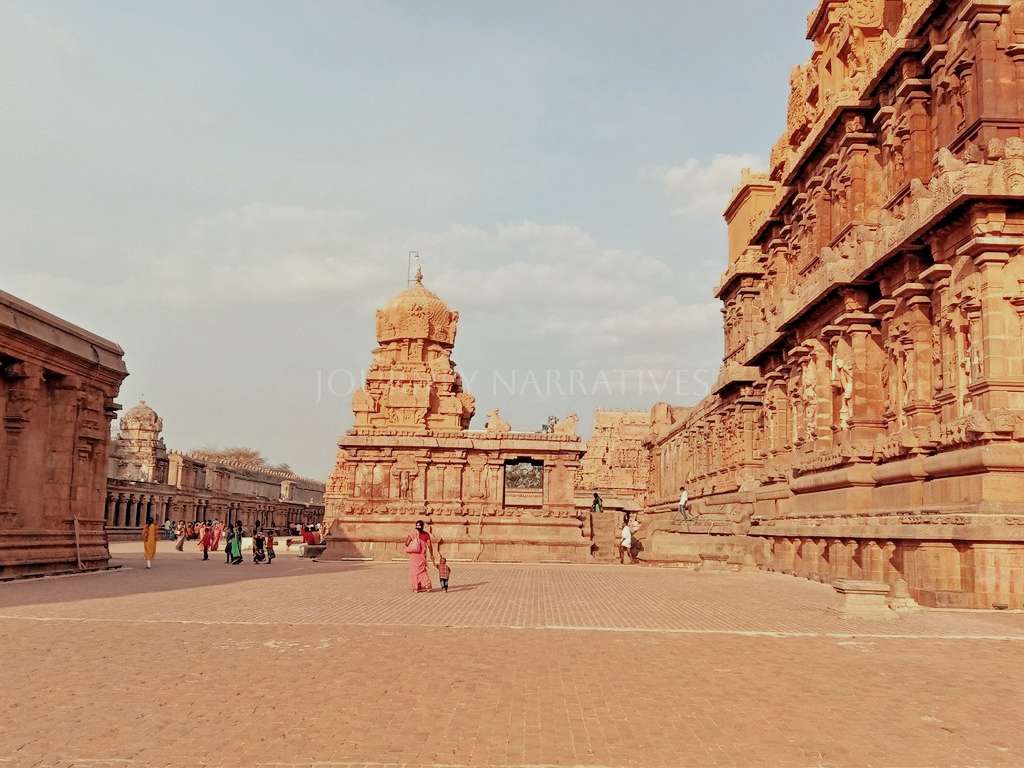
Materials Used in Brihadeeswarar Temple
The materials used in its construction contribute significantly to its grandeur and durability. Here are the primary materials used:
1. Granite
Granite is the predominant material used in the construction of Brihadeeswarar Temple. The temple’s towering vimana (sanctum tower), walls, columns, and sculptures are made from this durable stone. The choice of granite, known for its hardness and resistance to weathering, has contributed to the temple’s longevity.
2. Sandstone
While granite is the primary material, sandstone was also used in some parts of the temple. Sandstone, being slightly softer than granite, was easier to carve, making it suitable for intricate sculptures and relief work.
3. Limestone Mortar
Limestone mortar was used as a binding material to join the massive stone blocks. This mortar has stood the test of time, holding the structure together for over a thousand years.
4. Bronze
The temple is renowned for its bronze sculptures, which exemplify the Chola dynasty’s advanced metallurgical skills. These sculptures, depicting various deities and figures, are celebrated for their exquisite craftsmanship and detail.
5. Wood
Although the primary structure is stone, wood was used for certain elements, such as doors and ceilings in some parts of the temple complex. The woodwork, though less prominent, adds to the temple’s aesthetic appeal.
6. Gold and Copper
Gold and copper were used for ornamental purposes. The kalasam (capstone) atop the vimana was originally gold-plated, symbolizing the temple’s sacredness and the wealth of the Chola dynasty.
Construction Techniques
- Ramp Construction: To transport the massive granite blocks to the top of the vimana, a ramp several kilometers long was constructed. This ramp, gradually sloping upwards, allowed workers to roll the stones to the desired height using a combination of manpower and animal power.
- Precise Carving and Fitting: The intricate carvings and the precise fitting of stone blocks without the use of modern machinery highlight the advanced skills of the Chola craftsmen. Each block was meticulously shaped and placed to ensure structural stability and aesthetic harmony.

To-Do List
- Pay homage to Lord Shiva by offering prayers and seeking blessings at the main sanctum of the Brihadeeswarar Temple.
- Take a stroll around the temple complex and admire the architectural brilliance of the Chola artisans, showcased in the intricate carvings and towering vimana.
- Witness the mesmerizing evening aarti ceremony, where priests perform rituals and chant hymns, creating an atmosphere of spiritual fervor and devotion.
- Wander through the labyrinthine corridors and explore the various shrines, mandapams (pillared halls), and gopurams (temple towers) that adorn the temple complex.
- Capture the beauty of the Brihadeeswarar Temple through photographs and create lasting memories of your visit to this iconic landmark.
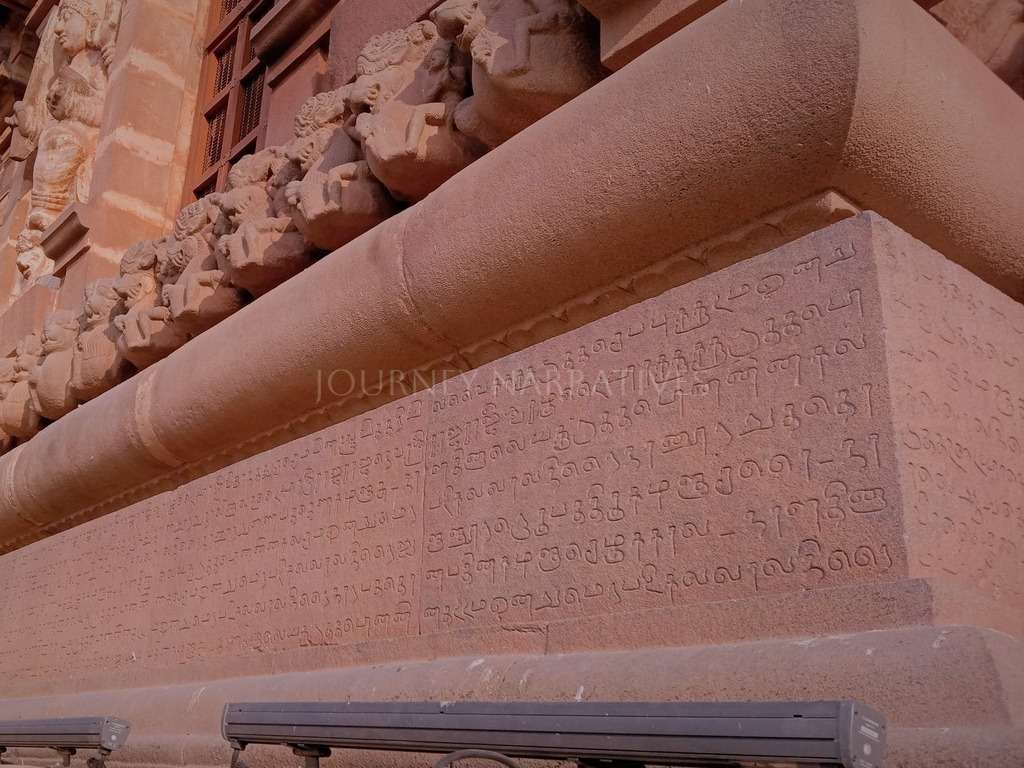
Interesting facts
The temple’s vimana, or tower, is one of the tallest in the world, soaring to a height of around 216 feet. It is a stunning sight to behold and dominates the skyline of Tanjore. The capstone of Brihadeeswarar Temple is a single block of granite weighing approximately 80 tons (or 80,000 kilograms). This massive stone was transported and lifted to the top of the 66-meter-high vimana, which is a testament to the engineering and architectural skills of the Chola dynasty.
How to Reach
From Chennai
Travel Distance: Approximately 350 kilometers
Travel Time: Around 6-7 hours by road
Travel Direction: Head southwest on NH32 towards NH36, then continue on NH36 towards Tanjore.
Transport Options: You can either drive or take a bus from Chennai to Tanjore. Several private and government-operated buses ply this route regularly.
Important Landmarks Nearby: En route, you’ll pass through towns like Villupuram and Trichy, where you can take short breaks and explore local attractions.
Hours Required for the Visit: Plan for a full day trip to explore the Brihadeeswarar Temple and its surroundings thoroughly.
From Bangalore
Travel Distance: Approximately 400 kilometers
Travel Time: Around 7-8 hours by road
Travel Direction: Take NH44 towards NH48, then continue on NH48 towards Tanjore.
Transport Options: Similar to the Chennai route, you can opt for either self-driving or taking a bus from Bangalore to Tanjore.
Important Landmarks Nearby: Along the way, you’ll pass through cities like Hosur and Salem, where you can take breaks and enjoy local cuisine.
Hours Required for the Visit: Allocate a minimum of one full day for your visit to the Brihadeeswarar Temple from Bangalore.
Interesting Facts
What makes the temple’s construction even more impressive is that it was built entirely without the use of mortar. The massive stone blocks were intricately fitted together using precise engineering techniques, showcasing the advanced skills of the artisans of that era.
Brihadeeswarar Temple Opening Time
As of my knowledge, the general opening hours for the Brihadeeswarar Temple in Thanjavur, Tamil Nadu, are from early morning to late evening. However, please note that opening hours can be subject to change, and it’s always a good idea to check for the latest information before planning your visit. You can do so by contacting the temple authorities directly or checking their official website.
Typically, the temple opens at around 6:00 AM and closes around 8:30 PM. The temple may also have specific timings for afternoon closure, commonly referred to as “temple closure” or “Uchikala Pooja.” Additionally, special pujas and rituals may have specific timings, so it’s worthwhile to inquire about any specific events you may want to witness during your visit.
Special Note: Remember that religious or cultural events, as well as maintenance work, can sometimes affect the regular schedule. Always verify the current opening hours to ensure a smooth and fulfilling visit to this historic and sacred site.
Best Time of the Day to Visit
The Brihadeeswarar Temple in Tanjore presents a serene and captivating ambiance at various times throughout the day, but the best time to visit is either early in the morning or late in the evening.
In the early morning, the temple grounds are enveloped in a peaceful atmosphere, with the gentle glow of dawn casting a golden hue over the ancient structures. This time offers visitors the opportunity to witness the temple awakening to the day, with devotees beginning their prayers and rituals amidst the tranquil surroundings.
Similarly, Brihadeeswarar temple at night, offers a magical experience as the sun sets, bathing the temple in a warm, ethereal light. The fading light creates a mesmerizing backdrop for exploring the temple complex, with the towering vimana casting long shadows against the backdrop of the twilight sky.
Moreover, visiting the temple during these quieter hours allows for a more intimate and contemplative experience, away from the hustle and bustle of the daytime crowds. It provides the perfect opportunity to soak in the spiritual ambiance, marvel at the architectural wonders, and connect with the divine in a peaceful and serene setting.
Best Time of the Year to Visit
The optimal time to visit the Brihadeeswarar Temple in Tanjore is during the winter months, typically from November to February. During this period, the weather in Tanjore is pleasant and relatively cool, making it ideal for exploring the temple complex and its surroundings comfortably. The temperatures are mild, ranging from around 20 to 30 degrees Celsius, providing a comfortable environment for sightseeing and outdoor activities.
Additionally, the winter months coincide with the festival season in India, offering visitors the opportunity to witness and participate in various cultural and religious celebrations. The festive atmosphere adds to the charm of the visit, with the temple adorned in vibrant decorations and bustling with devotees and tourists alike.
Moreover, the winter months are considered the off-peak tourist season in Tanjore, resulting in fewer crowds and shorter queues at the temple. This allows visitors to enjoy a more peaceful and intimate experience, with ample time to explore the temple complex at their own pace and soak in its spiritual ambiance without feeling rushed.
Overall, the winter months provide the perfect backdrop for a memorable visit to the Brihadeeswarar Temple, offering favorable weather conditions, cultural festivities, and a tranquil atmosphere for a truly enriching experience.
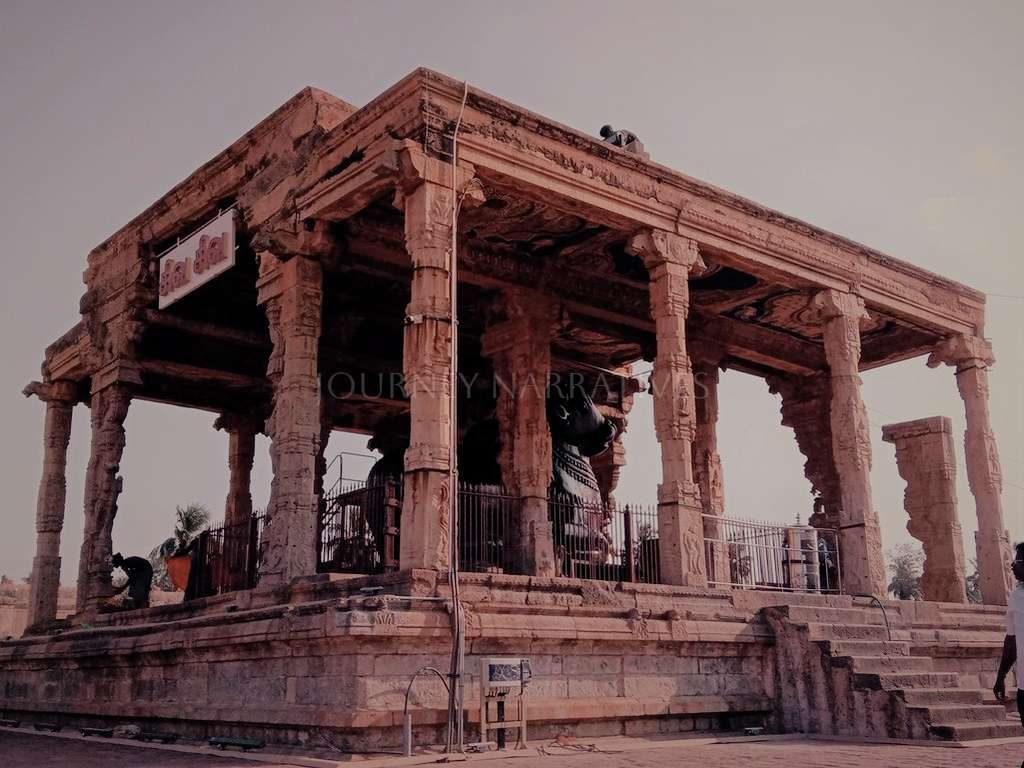
Interesting facts
The temple complex includes an underground chamber that is believed to have served as a storehouse for valuable treasures during ancient times. This adds an air of mystery to the temple’s history.
Special Occasions
Brihadeeswarar Temple in Tanjore is a significant pilgrimage site, and various special occasions and festivals are celebrated with great fervor. Here are some of the notable special occasions and events at Brihadeeswarar Temple
1. Maha Shivaratri:
Date: Usually falls in February or March.
Significance: Maha Shivaratri is dedicated to Lord Shiva. Devotees fast, perform rituals, and offer prayers to seek the blessings of Lord Shiva. The temple sees an influx of pilgrims during this festival.
2. Arudra Darisanam:
Date: Celebrated in the Tamil month of Margazhi (December-January).
Significance: Arudra Darisanam commemorates the cosmic dance of Lord Shiva, known as Ananda Tandava. Devotees gather to witness special poojas and rituals during this occasion.
3. Aipasi Annabishekam:
Date: Occurs in the Tamil month of Aipasi (October-November).
Significance: Annabishekam is a grand abhishekam (ritual bathing) ceremony performed to the presiding deity, Lord Brihadeeswarar. The temple is adorned with flowers and lights during this event.
4. Chittirai Festival:
Date: Celebrated in the Tamil month of Chittirai (April-May).
Significance: Chittirai Festival marks the Tamil New Year and includes elaborate processions, cultural events, and special rituals. The event attracts a large number of devotees and tourists.
5. Panguni Uthiram:
Date: Usually falls in the Tamil month of Panguni (March-April).
Significance: Panguni Uthiram is dedicated to the celestial wedding of Lord Shiva and Goddess Parvati. Devotees participate in various rituals, and the temple is adorned with decorations.
6. Karthigai Deepam:
Date: Celebrated in the Tamil month of Karthigai (November-December).
Significance: Karthigai Deepam involves lighting lamps and the ceremonial lighting of the Maha Deepam (sacred lamp) on the temple’s hill. The festival signifies the victory of light over darkness.
Places to Stay
1. Svatma Heritage Hotel:
Immerse yourself in luxury and heritage at this exquisite hotel, housed in a restored heritage mansion and offering world-class amenities and personalized service.
2. Hotel Parisutham:
Experience comfort and convenience at this centrally located hotel, featuring spacious rooms, modern amenities, and a warm, welcoming ambiance.
3. Hotel Tamil Nadu:
Enjoy a budget-friendly stay without compromising on comfort at this government-run hotel, offering clean and cosy rooms and a range of amenities.
4. Hotel Victoriyah:
Relax and unwind amidst the tranquil surroundings of this charming hotel, featuring elegantly appointed rooms, a rooftop restaurant, and attentive service.
5. PLA Residency:
Escape the hustle and bustle of the city at this serene hotel, offering panoramic views of the temple and the surrounding landscape, along with comfortable rooms and modern amenities.
Places to Eat
1. Venkatramana Bhavan:
Enjoy authentic South Indian cuisine at this popular eatery, known for its delicious dosas, idlis, and filter coffee.
2. Hotel Gnanam:
Treat yourself to a sumptuous feast of traditional Tamil Nadu dishes at this renowned restaurant, known for its warm hospitality and flavourful meals.
3. Sree Annapoorna:
Savor the flavors of Tanjore at this cozy restaurant, serving a wide variety of vegetarian delicacies, including thalis, curries, and sweets.
4. Raj Bhavan:
Indulge in a gastronomic journey of flavors at this upscale restaurant, offering a delectable spread of North and South Indian dishes in a sophisticated ambiance.
5. Sathars:
Sample the mouth-watering briyanis and kebabs at this popular restaurant, known for its aromatic spices and authentic flavors.
Places to Shop
1. Thanjavur Art Plates:
Where to Find: Various shops around the temple area.
Description: Thanjavur is renowned for its unique art plates that showcase intricate hand-painted designs. These plates often depict scenes from Hindu mythology, making them popular souvenirs.
2. Tanjore Paintings:
Where to Find: Art galleries and souvenir shops.
Description: Tanjore paintings are a classical South Indian art form characterized by rich colors, gold leaf, and embedded stones. Look for authentic pieces depicting deities, historical events, or landscapes.
3. Poompuhar Handicrafts Emporium:
Where to Find: Old Bus Stand, Anna Salai, Thanjavur, Tamil Nadu 613001.
Description: Poompuhar is a government-run handicrafts emporium that offers a range of traditional artifacts, handloom products, and cultural items. It’s a good place to find authentic Tamil Nadu handicrafts.
4. Silk Sarees:
Where to Find: Local saree shops.
Description: Thanjavur is known for its silk sarees. You can explore local shops to find a variety of silk sarees with traditional designs, often featuring vibrant colors and intricate patterns.
5. Bronze Statues and Sculptures:
Where to Find: Antique shops and art galleries.
Description: Thanjavur has a rich tradition of bronze casting. Explore shops to find intricately crafted bronze statues and sculptures of Hindu deities and mythological figures.
6. Cultural and Religious Items:
Where to Find: Street markets and souvenir shops.
Description: Look for small religious idols, incense, traditional jewelry, and other cultural items that make for meaningful and symbolic souvenirs.
7. Local Markets:
Where to Find: Markets near the temple area.
Description: Explore local markets for a vibrant shopping experience. You might find a variety of items, including handicrafts, textiles, and street food.
Remember to bargain when shopping in local markets, and always verify the authenticity of any traditional or antique items you may be interested in purchasing. Enjoy the unique shopping experience as you immerse yourself in the cultural tapestry of Thanjavur.
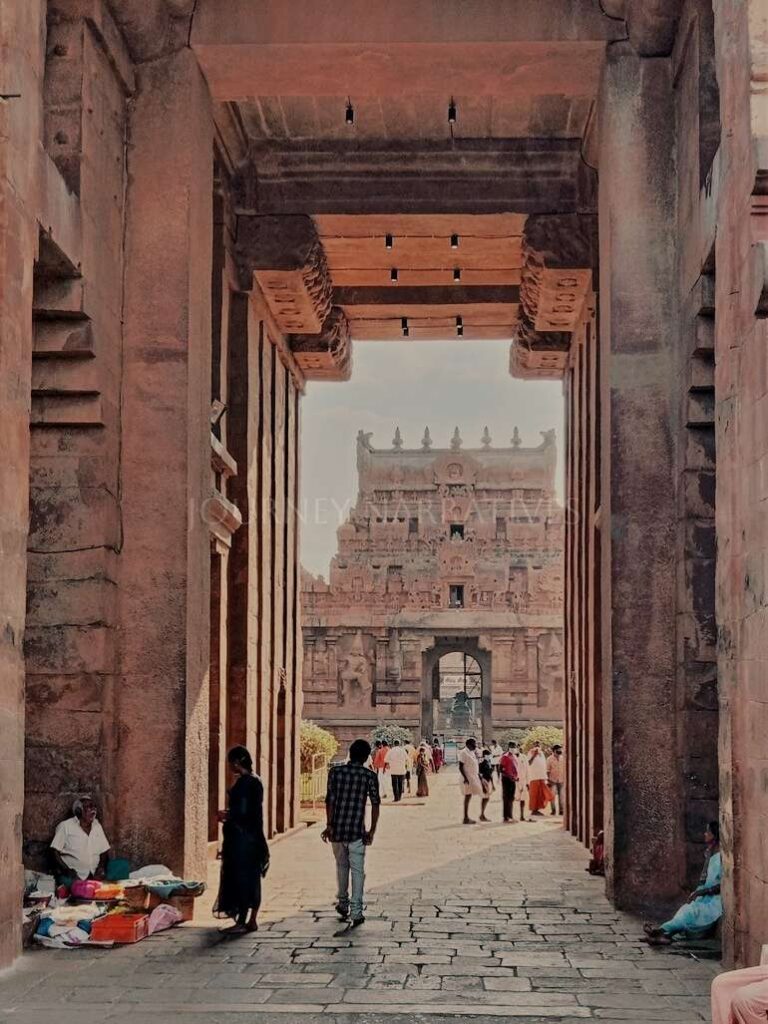
Things to Carry
- Wear comfortable footwear as you’ll be doing a lot of walking around the temple complex.
- Stay hydrated during your visit by carrying a water bottle with you.
- Protect yourself from the harsh sun by wearing sunscreen and a hat.
- Capture the beauty of the temple and its surroundings by bringing along a camera or smartphone.
- If you wish to offer prayers at the temple, carry offerings such as flowers, fruits, or coconuts.
General Tips
- As a place of worship, it’s important to dress modestly when visiting the Brihadeeswarar Temple, covering your shoulders and legs.
- Observe the customs and traditions of the temple, such as removing your shoes before entering and refraining from photography inside the sanctum.
- Carry a water bottle with you and stay hydrated, especially during the hot summer months.
- Plan your visit to the Brihadeeswarar Temple during non-peak hours to avoid crowds and long queues.
- Be mindful of your surroundings and follow safety guidelines, especially when exploring the temple complex.
- Maintain a respectful demeanor at all times and avoid engaging in loud or disruptive behavior.
- Seek permission before photographing or filming inside the temple complex, respecting the privacy of other visitors.
- Travel light and carry only essential items with you to avoid unnecessary hassle during your visit.
- Stay informed about the temple’s rules and regulations by reading informational signs and notices posted around the premises.
- Finally, take the time to soak in the ambiance and spirituality of the Brihadeeswarar Temple, allowing yourself to be fully present in the moment.
Personal Reflections
My visit to the Brihadeeswarar Temple in Thanjavur was nothing short of a spiritual awakening, as I found myself immersed in the timeless beauty and serenity of this sacred site. From the awe-inspiring architecture to the soul-stirring rituals, every moment spent within the temple’s hallowed walls left an indelible mark on my heart and soul. As I bid farewell to this iconic landmark, I carried with me not just memories, but a profound sense of gratitude for having experienced the magic of the Brihadeeswarar Temple first-hand. Truly, it is a place where the divine meets the mortal, and where the past merges seamlessly with the present, reminding us of the eternal beauty and wisdom that lies within us all.
With this comprehensive guide, I hope to inspire fellow travelers to embark on their journey of discovery to the Brihadeeswarar Temple, where history, spirituality, and culture converge to create an unforgettable experience.







